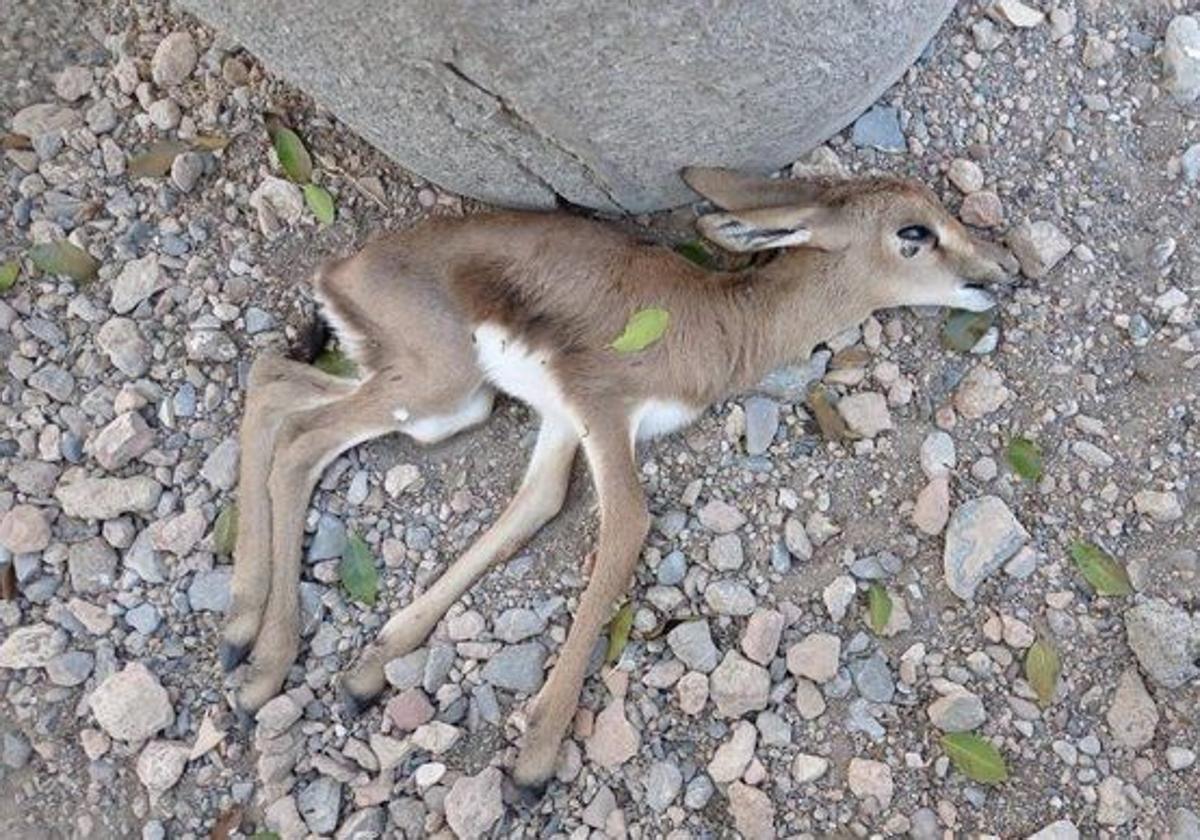

Sections
Highlight

Europa Press
Almeria
Wednesday, 26 June 2024, 17:00
Three endangered dama gazelles, including a calf which was just a few days old and another which was heavily pregnant, a pregnant Barbary sheep and a newborn Cuvier's gazelle have died as a result of "stress and agitation" suffered at the Finca Experimental La Hoya during music concerts organised by Almera city hall between 19 and 22 June in this area, according to the Arid Zones Experimental Station (EEZA-CSIC).
In a statement, the research station's veterinarian, Sonia Domínguez, said that the veterinary report indicates that the causes of the animals' deaths were "maternal neglect of one of the calves", "a miscarriage" and "various traumatic injuries", all "caused as a result of stress and agitation caused by the concerts" during the Alamar festival that took place in La Hoya park, just a few metres from the reserve.
The research institute, which belongs to the Consejo Superior de Investigaciones Científicas, recalled that they asked Almería city hall to move the concerts scheduled for 19-22 June in the Parque de la Hoya to another location "due to the health problems they could cause" to the animals". The request was rejected by the city hall.
The mayor of Almeria, María del Mar Vázquez, defended the "compatibility" between the Saharan rescue park and the shows, including the flamenco festival scheduled for mid-July, by considering them "semi-acoustic concerts with low noise impact", although at the same time she announced an "acoustic study" to analyse the impact on the almost 400 endangered animals housed in the reserve.
"This is not a question of generating conflict every time the city hall wants to hold an activity. As we are reasonable people, if we see that it cannot be done, we will change the location. There is no need to generate conflict for everything that is done," said Vázquez who, in the absence of such a study to determine the "compatibility", stressed that the concerts involved only a "few decibels".
In view of these deaths, the director of the EEZA, Teresa Abáigar, has stated that it is "frustrating that the Almeria city hall has not shown the sense of caution required of a public administration" with regard to the protection of the animals at the farm.
"We hope that, in the future, appropriate measures will be taken so that similar events do not happen again," added Abáigar, while the institute's veterinarian pointed out that the death of these animals "could have been avoided".
Domínguez stressed that the city hall was warned "of the special sensitivity of these animals and of the critical moment they are in these days during the breeding season". She went on to say, "We have lost animals of incalculable value for conservation programmes and there is no way back."
The Finca Experimental La Hoya has the dual purpose of serving as infrastructure for the ex situ Conservation Programmes (outside their habitat) that are coordinated from the EEZA, while at the same time offering an outdoor experimental space that provides logistical support to the institute's research. The Finca is a 20-hectare plot located behind the hill where Almeria city's Alcazaba stands.
In its beginnings (1950s and 1960s), this area was used as an experimental zone for agricultural studies. In 1970, and following the arrival of the first gazelles and Barbary sheep from Western Sahara, then Spanish territory, this area was renamed the Saharan Fauna Rescue Park, and initially housed a few specimens of four species of endangered animals from Western Sahara.
2021 marked the 50th anniversary of the arrival of the first gazelles in Almeria. The current population is around 400 specimens. The EEZA coordinates European conservation programmes for four endangered North African species: the dama gazelle (Nanger dama mhorr), Cuvier's gazelle (Gazella cuvieri), the Saharan dorcas gazelle (Gazella dorcas neglecta) and the Saharan Barbary sheep (Ammotragus lervia sahariensis). Today, descendants of the original animals can be seen in more than 36 European zoos with which the EEZA cooperates.
Reintroduction projects have been carried out with these species in Morocco, Senegal and Tunisia. Three of the above-mentioned species (arrui, dorcas gazelle and Cuvier's gazelle) are included in the threat category of "vulnerable" according to the International Union for Conservation of Nature (IUCN); the mohor gazelle is considered "critically endangered".
The farm houses the largest reserves of the four species that are part of the CSIC's history, making it one of the most specialised and important facilities for the conservation of endangered large mammals.
Publicidad
Publicidad
Publicidad
Publicidad
Esta funcionalidad es exclusiva para registrados.
Reporta un error en esta noticia

Debido a un error no hemos podido dar de alta tu suscripción.
Por favor, ponte en contacto con Atención al Cliente.

¡Bienvenido a SURINENGLISH!

Tu suscripción con Google se ha realizado correctamente, pero ya tenías otra suscripción activa en SURINENGLISH.
Déjanos tus datos y nos pondremos en contacto contigo para analizar tu caso

¡Tu suscripción con Google se ha realizado correctamente!
La compra se ha asociado al siguiente email
Comentar es una ventaja exclusiva para registrados
¿Ya eres registrado?
Inicia sesiónNecesitas ser suscriptor para poder votar.